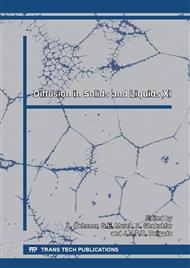p.6
p.12
p.17
p.24
p.30
p.36
p.42
p.48
p.53
Inverse Modelling for Prediction of Coating Material Diffusivity and Lag Time of Controlled-Release Coated Urea Granule
Abstract:
Controlled release fertilizer (CRF) has attracted a lot of interest because of its advantages for ecosystem in terms of enhancement of nutrient utilization and reducing nutrient loss from leaching and volatilization, etc. While a number of research studies on novel coating material to control the release of nutrients, modelling has a significant role in predicting release behaviour and determining good CRF design that matches the nutrient requirement from the plants. The present study proposes a solution to predict coating material parameters based on multi-diffusion model and preliminary experimental results using inverse simulation technique. In addition, the solution showed an advantage in prediction the release of nutrient, i.e., the reduction in experimental time which plays an important role in investigation novel coating material and designing of CRFs which are matched the nutrient uptake from plants. Hence, this solution reduces experimental cost and time to researchers, who investigated novel CRFs.
Info:
Periodical:
Pages:
30-35
Citation:
Online since:
July 2016
Authors:
Keywords:
Price:
Сopyright:
© 2016 Trans Tech Publications Ltd. All Rights Reserved
Share:
Citation:


